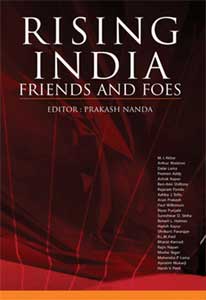The most important was to disorient the enemys mind and use confusion to ones advantage.
Successful psychological warfare requires a detailed knowledge of the enemy’s capabilities, its motives and compulsions and its enmities so that fault lines or ‘social contradictions’ could be exploited. The theory that ‘black’ is ‘white’ and visa versa was propagated by British as well as German communists who advised Lenin. William Stevenson’s study of the head of British Intelligence in New York during the Second World War shows how the black art was used by Churchill’s Britain to manipulate President Roosevelt to enter the war against Hitler and to shift American policy from neutrality to alignment with Britain against Hitler.5
Lenin and Mao emerged as proponents of psychological and revolutionary violence in the context of the rise of world communism, but the first major practitioners of ‘revolutionary violence’ were the British imperialists (pre-Bolshevik revolution) who used effectively, as a basis of their empire building, the art of exploiting social contradictions.6
 But they did not publicise a theory along these lines as the Marxists did and they did not leave behind records of their intelligence work and apparatus. The diplomatic record shows that the British authorities destroyed their intelligence archives when they left India. (In contrast the Americans made it a point of capturing the intelligence archives of Germany and Japan – the latter included files relating to Taiwan and the Korean peninsula. The US government and turned around members of the fallen regimes in Germany and Japan and recruited them in their cause against the communists). In other words, the systematic use of the black arts (psychological warfare) and development of knowledge of the social contradictions of the targeted country represent the preparation for great power’s intervention.When India became independent what was the nature of the preparations by the great powers to intervene in Indian affairs, and how alert were Indian leaders in recognizing the preparations and in taking measures to counter their effects on Indian interests and values? How did ‘black’ become ‘white’ and vice versa? I have discussed the relationships between ideological debates, strategic alignments and military fights in my book ‘India- From Regional to World Power’ (2006) and I will not repeat the points made there.
But they did not publicise a theory along these lines as the Marxists did and they did not leave behind records of their intelligence work and apparatus. The diplomatic record shows that the British authorities destroyed their intelligence archives when they left India. (In contrast the Americans made it a point of capturing the intelligence archives of Germany and Japan – the latter included files relating to Taiwan and the Korean peninsula. The US government and turned around members of the fallen regimes in Germany and Japan and recruited them in their cause against the communists). In other words, the systematic use of the black arts (psychological warfare) and development of knowledge of the social contradictions of the targeted country represent the preparation for great power’s intervention.When India became independent what was the nature of the preparations by the great powers to intervene in Indian affairs, and how alert were Indian leaders in recognizing the preparations and in taking measures to counter their effects on Indian interests and values? How did ‘black’ become ‘white’ and vice versa? I have discussed the relationships between ideological debates, strategic alignments and military fights in my book ‘India- From Regional to World Power’ (2006) and I will not repeat the points made there.
For the purpose of this paper it will suffice to summarize the lines of thinking expressed by the practitioners in Karachi/Islamabad, Washington and Beijing that became the basis of their interventions in Indian affairs, that created a polarity between deception and truth and that created a friction as well as a disorientation in the Indian (Nehruvian) diplomatic and strategic (anti-power politics and pro-peace, non-violence oriented) mind. India in 1947 had the advantage of being bigger in geographical size, it had a bigger population than its smaller neighbours, its economy was larger than that of all its immediate neighbours, and it had political and international legitimacy because of its democratic system. But still India’s strategic enemies had the comparative advantage as a result of their ambition and ability to show ‘black’ as ‘white’ and vice versa in a campaign to check India’s ambition and power development.
The actors are Britain, America, Russia, China and Pakistan from outside Indias borders and they intervened in Indian affairs.
If international politics is like a theater with actors, acts (sequence of actions), lines (and convincing lies) and stories to tell to an audience, the subcontinent has all the characteristics of political theatre. The actors are Britain, America, Russia, China and Pakistan from outside India’s borders and they intervened in Indian affairs. Within India the main actor was Nehru and his cohorts who emphasized the values of the socialist economy, state planning and a Nehru-centric state and party system, global pacifism and service to humanity especially to communist China, and bridge building between the Eastern and Western powers during the Cold War. In Act I of the play, British India and Indian Muslims shaped the Pakistan movement.
They set the line that Indian Muslims were in danger from the brute Hindu majority, they needed British protection, Hindus and Muslims formed two nations and there was a case for a separate Muslim homeland and Western protection of the Muslim minority and its homeland. This legend was created and it gained widespread public recognition before 1947 within British India, in British political circles and in Western political and strategic thought; Truman’s America and his successors (1949- present) accepted these lines in Act I of the political drama.




